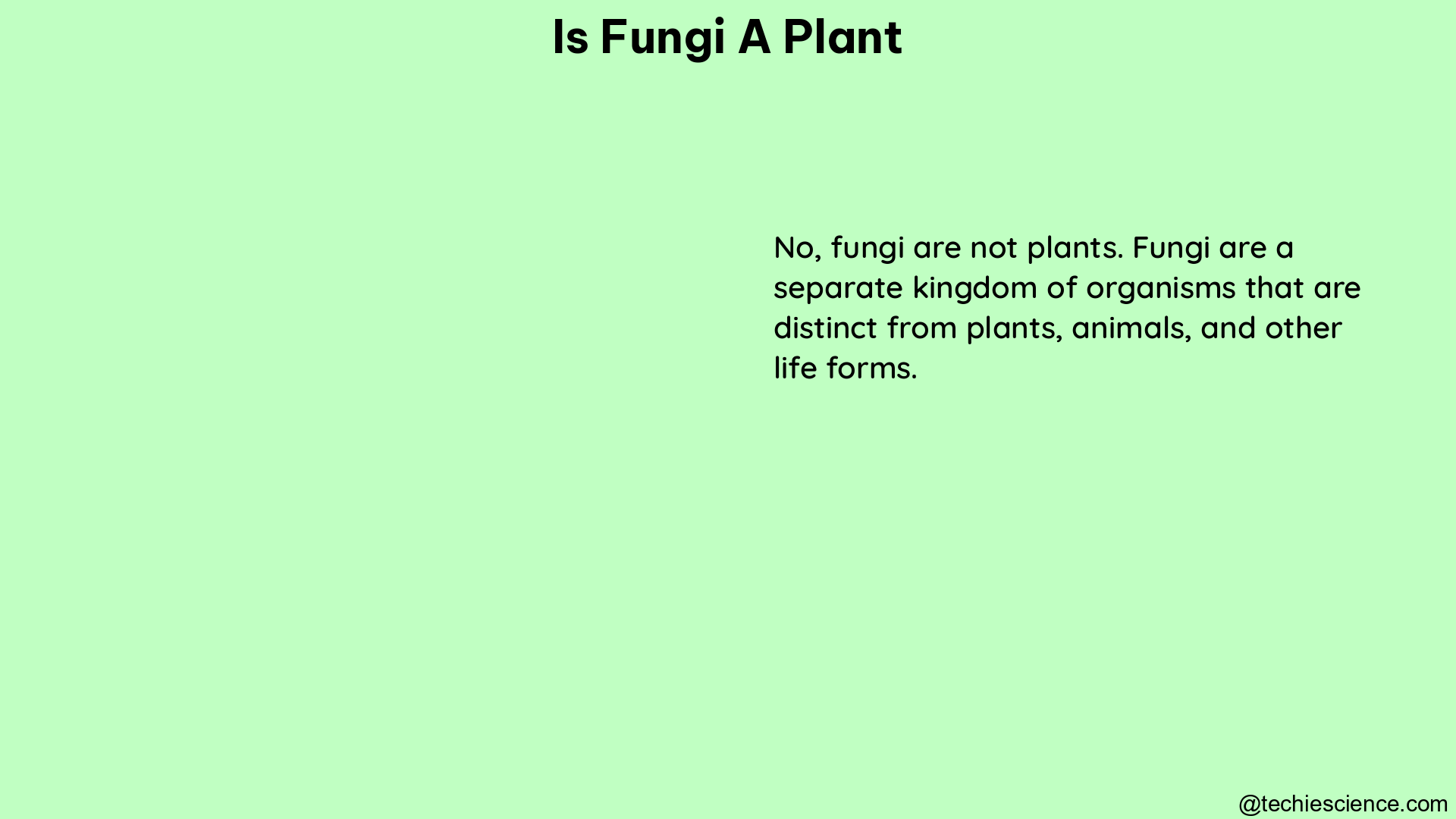Fungi are not plants, despite their historical classification as such. This misconception arose from early taxonomists’ observations that fungi are immobile and have rigid cell walls, leading them to conclude that fungi are not animals and should therefore be classified as plants. However, modern molecular tools and a deeper understanding of fungal biology have revealed significant differences between fungi and plants.
Nutrient Acquisition: A Key Distinction
One key difference lies in the way fungi acquire nutrients. Fungi secrete digestive enzymes and then absorb nutrients from their surroundings, a process known as extracellular digestion. This unique mode of nutrient acquisition is a stark contrast to the photosynthetic process employed by plants, where they make their own food using chloroplasts.
Fungi lack chloroplasts, a unifying feature of plants that is readily observable and plays a crucial role in plant evolution. While some plants, such as ghost pipes (Monotropa), have lost functional chloroplasts during their evolutionary history, fungi never possessed them in the first place.
Fungal Diversity: A Staggering Revelation

In terms of quantifiable data, a first comprehensive census of fungi in soil revealed both fungal and plant species richness at the same sites based on extensive molecular data. This study showed that one teaspoon of soil can contain hundreds of fungal species, highlighting the vast diversity of fungi in soil ecosystems.
According to the study, a single gram of soil can harbor up to 1 million different fungal species, a remarkable finding that underscores the sheer abundance and diversity of fungi in the natural world. This diversity is a testament to the evolutionary success and ecological importance of fungi, which have adapted to a wide range of habitats and niches.
Mycorrhizal Fungi: A Global Carbon Sink
A more recent study analyzed nearly 200 datasets to provide the first global quantitative estimates of carbon allocation from plants to the mycelium of mycorrhizal fungi. The study found that global plant communities allocate:
- 3.93 Gt CO2e per year to arbuscular mycorrhizal fungi
- 9.07 Gt CO2e per year to ectomycorrhizal fungi
- 0.12 Gt CO2e per year to ericoid mycorrhizal fungi
Based on these estimates, 13.12 Gt of CO2e fixed by terrestrial plants is, at least temporarily, allocated to the underground mycelium of mycorrhizal fungi per year, equating to approximately 36% of current annual CO2 emissions from fossil fuels.
These findings underscore the importance of mycorrhizal fungi in global carbon dynamics and emphasize the need to consider fungi separately from plants in both scientific research and conservation policy.
Evolutionary Divergence: A Distinct Kingdom
Fungi and plants have distinct evolutionary histories, with fungi belonging to a separate kingdom, Fungi, while plants belong to the kingdom Plantae. This taxonomic distinction is based on fundamental differences in their cellular structure, metabolism, and reproductive strategies.
Fungi are eukaryotic organisms that possess a cell wall made of chitin, a polysaccharide not found in plants. They also lack chloroplasts and rely on heterotrophic nutrition, obtaining their energy and carbon from organic compounds in their environment.
In contrast, plants are eukaryotic organisms that possess a cell wall made of cellulose and chloroplasts, which allow them to perform photosynthesis and produce their own organic compounds.
Ecological Roles: Fungi as Decomposers and Symbionts
Fungi play a crucial role in the ecosystem as decomposers, breaking down organic matter and recycling nutrients back into the soil. This process is essential for the functioning of terrestrial ecosystems, as it ensures the continuous cycling of essential elements like carbon, nitrogen, and phosphorus.
Additionally, many fungi form symbiotic relationships with plants, known as mycorrhizal associations. In these relationships, the fungi provide the plants with water and nutrients, while the plants supply the fungi with carbohydrates produced through photosynthesis. These mutually beneficial interactions are essential for the growth and survival of both organisms.
Conclusion
In conclusion, fungi are not plants, despite their historical classification as such. The key differences between fungi and plants lie in their nutrient acquisition strategies, cellular structure, evolutionary history, and ecological roles. The vast diversity of fungi, their importance in global carbon dynamics, and their unique symbiotic relationships with plants all underscore the need to consider fungi as a distinct and vital component of the natural world.
References:
– State of the World’s Plants and Fungi 2023 – Kew Gardens
– A first comprehensive census of fungi in soil reveals both fungal and plant species richness at the same sites based on extensive molecular data bringing a trait‐based approach to plant‐associated fungi
– Three Reasons Fungi Are Not Plants
– Mycorrhizal mycelium as a global carbon pool – ScienceDirect
Hi..I am Tanu Rapria, I have completed my Master’s in Biotechnology. I always like to explore new areas in the field of Biotechnology.
Apart from this, I like to read, travel and photography.